Surgical removal of the Prostate Gland
This is a procedure carried out in an effort to cure prostate cancer. The entire prostate gland is removed (as opposed to a laser operation (HoLEP) where just the middle part of the prostate is removed in order to allow men to pass urine more freely).
Procedure
The operation is carried out under general anaesthetic at Grace Hospital. You will be admitted on the morning of the surgery. It is desirable, although not critical, for you to have a bowel motion some time in the 12 hours prior to surgery and we will give you a microlax enema to help you with this in the evening prior if required.
It is important you have nothing to eat or drink for at least six hours prior to your operation. The anaesthetist will usually place a spinal block which helps with post-operative pain relief prior to putting you to sleep.
The procedure is performed through a midline lower abdominal incision extending from below the umbilicus to just above the pubic bone. The prostate and attached seminal vesicles are removed and the bladder is brought down and joined to the urethra. The wound is closed using dissolvable stitches. You may or may not require a pelvic drain which is usually removed on the first post-operative day. A urinary catheter is left in for 10 days in order to allow the join between the bladder and the urethra to heal. The operation takes about 1.5 - 2 hours and the usual hospital stay is around 2 - 3 days.
- Occasionally, depending on how aggressive your cancer is, the pelvic lymph nodes may need to be removed along with the prostate.
Post Procedure
Most patients feel pretty good and are able to receive visitors within 3 hours of the operation finishing. You will only have oral fluids on the day of surgery to avoid nausea, but you can eat as normal the following day. You will be encouraged to get out of bed on the first post-operative day - don't be surprised if you feel a little woozy initially.
- A subcutaneous anti-clotting injection will be given until you are mobilising to prevent blood clots forming in your legs and lungs. You will be taught how to manage your catheter (which you go home with) and an appointment will be made in the rooms for you to have this removed.
Results
- We usually have the cancer results within 7 - 10 days after the procedure. We realise that this can be quite an anxious time and as soon as we get the results we will phone you and let you know what they are.
- We usually like to see you back in the rooms about three weeks following the procedure.
Complications
All surgical procedures are associated with some risk. General risks include that of wound infection, blood clot formation and pneumonia, but in practice these are rare.
The specific risks relating to radical prostatectomy are outlined below:
- The main potential intra-operative complication is the risk of significant blood loss requiring a blood transfusion. The average blood loss of this procedure over the last 10 years is around 500ml and it is very rare (<1%), to have to transfuse anyone. Having said that, if you need it you will get it!
- The posterior surface of the prostate is in close proximity to the lower bowel and there is a small risk of injury to the rectum. This is uncommon, occurring in less than 1% of patients. It is usually easily recognised and is repaired at the time. You might need to be on antibiotics for a week or so in the unlikely event that this happens but there are usually no long-term problems as a result.
Post-operative complications
The three main risks following this procedure are urinary incontinence, impotence, and bladder neck stenosis (narrowing at the bladder neck).
Incontinence
Normal continence is controlled by a circular muscle that surrounds the urethra (external urethral sphincter). This muscle is closely associated with the apex of the prostate and can be damaged to a degree during the removal of the gland. It is very common therefore for patients to have some urinary leakage following the procedure. This can be quite severe in the first week or two after the catheter comes out but usually rapidly improves and by 6 - 8 weeks most patients have reasonable control.
By 3 months about 95% of patients are essentially dry. A minority of patients never regain normal continence. If you are unlucky enough to be in this 5% group you will not have to put up with this forever as there are various, relatively minor, procedures that can resolve this problem.
Impotence
The "cavernous nerves" are responsible for normal erections. They run very close to the side of the prostate and are therefore at risk of damage during radical prostatectomy. Nerve-sparing surgery is possible but preserving the nerves has secondary importance compared to ensuring cancer has been removed. Some patients will have high-risk diseases, and in these, nerve-sparing would not be appropriate as there is a high chance of leaving cancer behind.
Even with nerve-sparing, there is no guarantee of maintaining normal erections. Return of erections depends on a number of other factors besides the nerves including patient age and pre-operative erection quality. A young patient with good erectile function and bilateral nerve-sparing has a good chance of regaining normal erectile function, somewhere in the order of around 80%.
It is important to note that it can take some time for erections to return. This is because the nerves don't like being handled or manipulated and develop something called neuropraxia. It can take one or two years for normal erections to fully return. During this time you will be offered active erectile rehabilitation. It is also worth noting that the erectile nerves are different than the sensory nerves. You will still be able to have an orgasm after a radical prostatectomy. There is of course no ejaculate and you will be unable to have children.
Bladder neck stenosis
This is due to excessive scarring at the join between the bladder neck and urethra. It occurs in around 5% of patients. Patients notice their urinary flow (which usually is much better following radical prostatectomy), gradually decreasing. They may find that their continence, which has been quite good, deteriorates. This condition is usually simple to treat and just involves incising the scar tissue. (Under general anaesthetic).
Return to Work
This depends on your job. In the first two weeks post operatively, most patients get very tired in the afternoons. If you have a desk job you could be expect to be back at work after about 3 - 4 weeks. If you do a very physical job it may take up to 12 weeks before you are ready to return to work.
Follow Up
The removed prostate will be examined by the pathologist and we will let you know the results as soon as we have them. This is usually within two weeks postoperatively.
Further management from the cancer point of view depends a little on the riskiness of your disease. Some patients may need further procedures such as post-operative radiotherapy although we usually have an idea of who is likely to need this prior to carrying out the radical prostatectomy. In others usually all that is needed is regular PSA monitoring.
The prostate is the only organ to make PSA and if you have had a cure for prostate cancer your PSA should drop to undetectable levels (less than 0.02). It is important not to do a PSA blood test too early postoperatively as sometimes it takes a while for the existing PSA in the blood to be cleared from the bloodstream. If your PSA should start to climb following surgery then it is important that we know about this as soon as possible as salvage radiotherapy, given early, is often a potentially curative second-line option.




